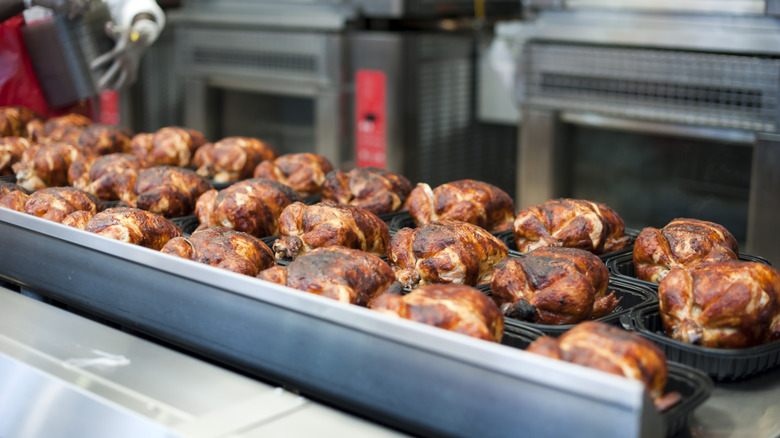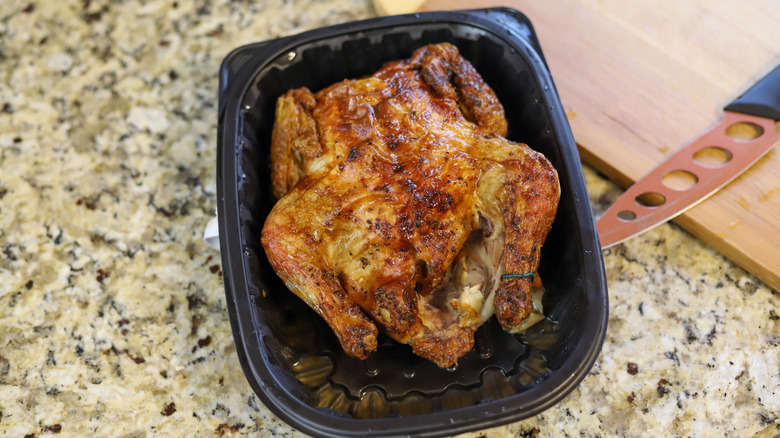Why A Large Amount Of Rotisserie Chickens At The Grocery Store Is A Bad Sign
Who among us hasn't been tempted by the great-smelling hot racks of rotisserie chickens on display at the grocery store deli? They're affordable, delicious, and make a quick, easy dinner when you are tight on time and resources. It's surely a bummer when you are craving a rotisserie bird and the display has been picked clean. Yet, on the other hand, seeing a vast sea of unsold cooked birds on display is a major grocery store red flag that's on par with broken freezer door seals.
Grocery store rotisserie chickens are cheaper than raw ones because they are usually close to expiration and are being repurposed as opposed to marked down or thrown out. But too many rotisserie chickens may, according to common sense, be an indicator that the chickens in question are exceedingly cheap or of poor quality. This could mean that the grocer doesn't mind getting stocking them at a seriously low cost even if nobody's buying.
Rotisserie chicken economics are fascinating because they are one of the very few convenience foods that are actually more cost-effective than their raw materials. While you will almost always pay more for frozen french fries than whole potatoes and bakery brownies command a premium as opposed to a boxed mix, a cooked chicken is a screaming deal. Keep in mind, however, that a store being willing to deliver too many deals might be an indicator that the chickens on display are lousy specimens.
Grocery stores don't like wasting money, so buyer beware
A grocery store is a model of hidden efficiencies. Bet you didn't know that old grocery store produce may be recycled in the salad bar, for instance. Despite best efforts, however, an estimated 30% of grocery store food goes unsold and becomes waste. As a result, grocery stores try hard to use up food where they can. They implement programs to try and ensure that no more fresh food is available than will actually be sold, and sink a lot of time and money into cutting shrinkage as much as possible. All this effort really has to make you wonder about a glut of roasted birds in the grocery store, especially when it seems unlikely that they will all be sold. Why would a store engage in such flagrant waste when retail grocer wastefulness is a constant battle?
The only feasible answer is that the chickens were so cheap that losing money on them won't really hurt the bottom line. Just like every retailer has to account for a certain amount of theft, damage, and loss, taking a bath on some poor-quality, inexpensive chickens isn't going to hurt grocers. So take a long, hard look at the chickens in the deli case. Do they look healthy, moist, and good to eat? Your eyes will likely know the difference. Chickens that are scrawny, wiry, or look overcooked and shriveled should, as your common sense indicates, be left on the shelf.

